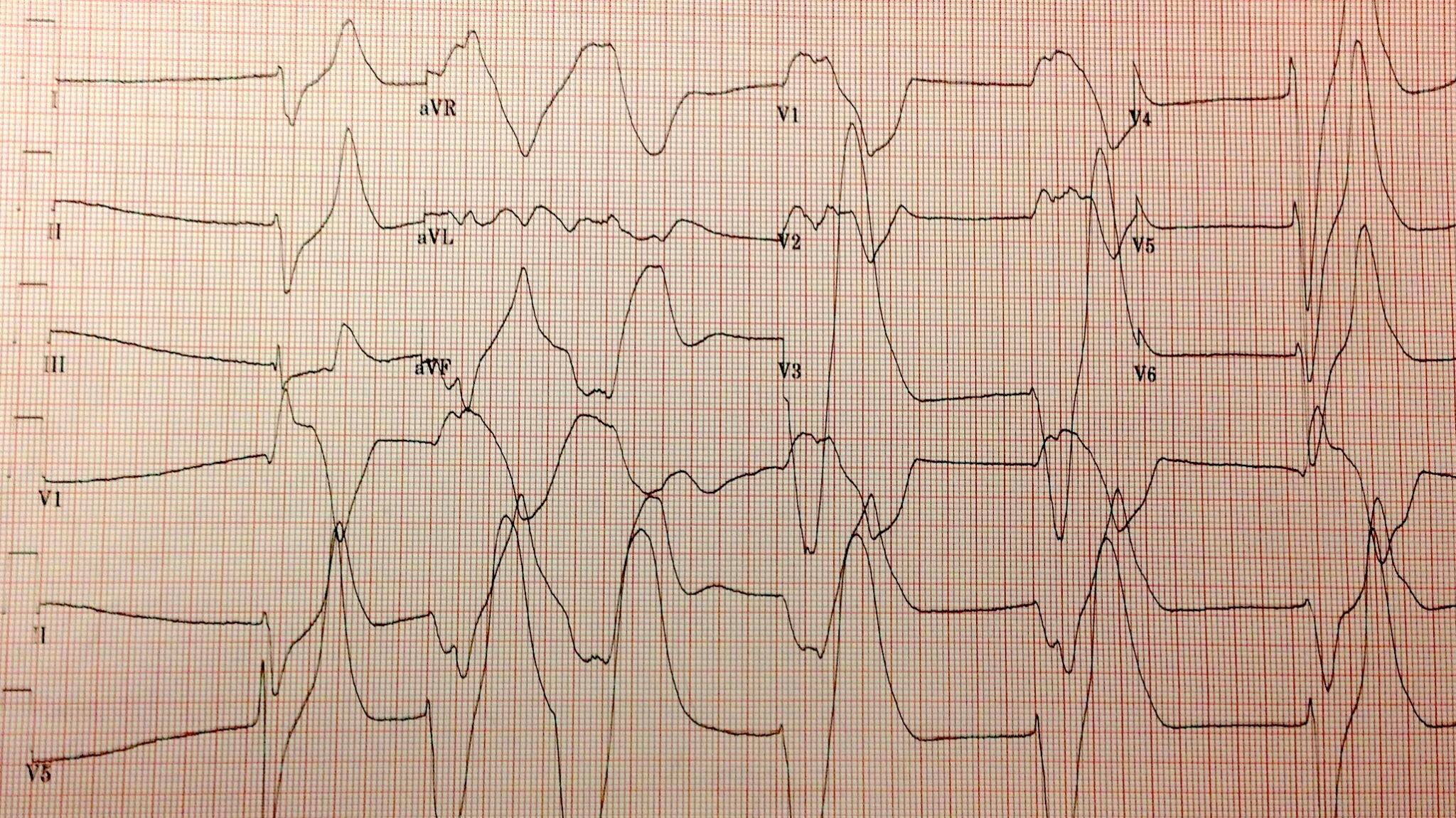Don’t worry about that potassium of 9.9, the computer says it’s hemolyzed. twitter.com/kidney_boy/sta…
— Joel Topf (@kidney_boy) April 10, 2013
...however, it was a hemolyzed specimen so it is a tarnished victory. The patient is a dialysis patient in DKA and had a blood sugar of 925 at the time of the hyperkalemia.
 |
| I love that the only things not circled are a creatinine of 8.9 and BUN of 50. |
- The initial serum potassium was not that high, despite the subtle EKG changes the real potassium had to be somewhat lower and falsely elevated due to the hemolysis.
- In DKA the hyperkalemia seen on presentation is due to a transcellular shift of potassium from the lack of insulin and increased extracellular osmolality (from the hyperglycemia), both of these are quickly reversible with IV insulin.
K+= 25.4 – (3.02 x pH) + (0.001 x glucose) + (0.028 x Anion Gap)
The calculation is a totally failure in our patient: it comes to a predicted potassium of 5.6. Though the equation is not very predictive (R2= 0.25), the article does a nice job reviewing the mechanisms of hyperkalemia in DKA. This is a concept that is commonly misunderstood. Medical students are quick to rely on the mechanism of potassium moving out of cells in exchange for hydrogen moving into cells in the face of acidemia. Adrogue reviews the data that shows that this does not occur with the organic acids of DKA or lactic acidosis but that acidemia does inhibit the Na-K-ATPase.
 |
| Nice picture but this in not an important mechanism in the hyperkalemia of DKA. |
The reason that acidemia does not generate hyperkalemia in DKA, is that the anions move into the cells along with the hydrogen ions, so there is no need to excrete potassium to maintain electroneutrality.
Funny story about Adrogue, I was eating breakfast at Kidney Week in 2011 when I looked at the name tag of the guy sitting next to me, it was Horacio Adrogue! My chin hit the floor and I started to gush about how much I respected his work and how I loved his NEJM electrolyte reviews and how I was hoping he would autograph my chest and could I pick up his dry cleaning and... then he interrupted me to explain that he was not the Adrogue I was looking for. He was, in fact, The Man's son and a transplant nephrologist of some regard. How humiliating.
Horacio E Adrogue
A nice review of the hyperkalemia and hyperglycemia in dialysis patients was published a couple of years ago by Tzamaloukas, a widely published investigator on the subject. I love this figure from the review which shows a curvilinear relationship of glucose and potassium in dialysis patients.
One of the interesting conclusions that I learned from the review: one of the most important variables which affects how much the potassium will fall with insulin is the pre-treatments potassium level, the higher the potassium, the greater the response to insulin. The data from that conclusion comes from this study: Serum potassium and acid-base parameters in severe dialysis-associated hyperglycemia treated with insulin therapy. It is an analysis of 43 episodes of hyperglycemia, half DKA and half non-ketotic hyperglycemia. Here is the money shot showing the relationship to initial potassium to drop in potassium:
 |
| Nice graph except for micromoles of potassium per mmol of glucose. Really? Could you make it more obtuse? |
What would you do for this patient?
I will share the results in a week or so.Addendum: some of the funnier tweets in response to my original tweet:
@kidney_boy probably artifact. Repeat ECG in am
— Lyle Shehane (@lyleshehane) April 10, 2013
@wanna_be_medic @kidney_boy It’s never good if your ECG looks like it was drawn by a five year old.
— Chump (@bungeechump) April 10, 2013
@kidney_boy unfortunately, it’s intravascular hemolysis.
— Michael Katz (@MGKatz036) April 10, 2013
@kidney_boy have patient follow up in Asystole Clinic in 3-5 days.
— GJ (@GregJNYC) April 11, 2013
We loved that comment so much we made it the Hyperkalemia Merit Badge:
But maybe we should have used:





